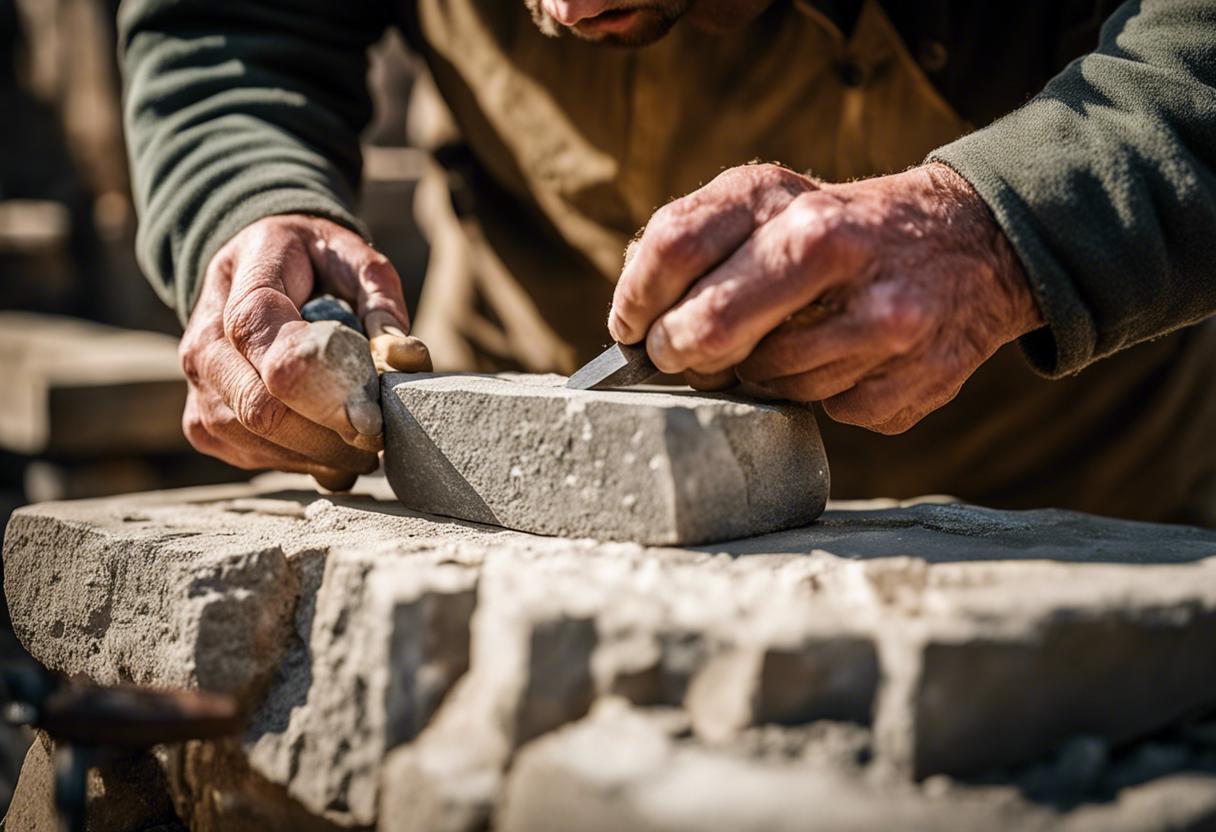As a sixth-generation stonemason, I had the privilege of learning the trade from my mother, who was a letter cutter. Despite my initial resistance towards joining this field, which was seen as a declining industry 25 years ago, my inherited knowledge helped me set a course for my own professional journey. I pursued a level six certification in dry stone walling, including basic carving skills, and then chose to specialise in the area of historic mortars.
I had the opportunity to participate in the William Morris Craft Fellowship conducted by the UK’s Society for the Protection of Ancient Buildings, and was lucky enough to secure a win. It’s disheartening to note the unfortunate degradation of our traditional homes in Ireland, while the UK maintains a more preservation-focused rather than restoration-centred approach.
Recently, Ireland has seen a growing interest in the preservation of architectural heritage. However, there exists a gap in the understanding of how robust wall structures function. The present grant schemes are more focused on achieving high building energy ratings rather than preserving historical architecture. Moreover, these schemes often push homeowners towards costly insulating plasters and limecrete floors that may not necessarily be beneficial, just because they are eligible for funds.
The financial support offered by these grants is just a fraction of what the actual expenditure for maintaining these structures entails. It’s crucial to acknowledge that historic buildings function in a distinctively different manner in comparison to modern buildings. I strive to bridge this knowledge gap by conducting training sessions on historic mortars and masonry in Ennistymon. My aim is to equip homeowners with the skills to autonomously take care of some of this work while also taking informed decisions. It’s always disheartening to see people squander their money.
I am deeply drawn to preserving national landmarks. The sensation you experience when mending a structure potentially dating back 3,000 years is extraordinary. To think, the last individuals to interact with these rocks were our forebears. The physical effort our ancestors put into constructing these edifices, the inherent energy, persists today and we’re able to sense it. One exceptional example was Doon Fort, an ancient stone fortification in Donegal, situated on an enchanting tiny island in the midst of Loughadoon. The walls are approximately four metres broad at the foundation, and almost six metres tall. How were they able to transport these stones to the island? One shared sentiment amongst myself and the other stone workers was a feeling of someone overseeing us, ensuring we were completing our role correctly and somewhat guiding us in selecting the appropriate stone.
Our current task is to restore a 300-year-old mill in Co Cavan. This unit is quite unique, being a double mill. It connects us with the routine activities our ancestors engaged in, like milling wheat into flour. We often undertake work on tombs. Having been raised amidst graveyards, I feel relaxed and comfortable in them. I am fascinated by reading grave inscriptions and learning who these people were. Many gravemarkers of children from the 1800s have been damaged. We feel they deserve to be remembered and go out of our way to repair some of them.
I also carry out local work on gravestones. Everyone that approaches us with a job knows us personally and we know them. Our aim is to do a good job for the family. While undertaking such work, I get a feeling that my grandfather is with me. Stone carving and monument making runs in my family, with my ancestors owning a quarry in Kilfenora. When I’m sculpting, I feel a strong connection to them.
Even though I tend to be very demanding of myself and my own work, the appreciation and positive feedback when clients visit the site makes me feel quite valued. We are made to feel very unique and special.
It is often perceived that enthusiasm and subsidies can be damaging to historical establishments. However, there’s an alternative approach known as “minimal intervention”, which essentially means to leave well enough alone and let the historic ruins be undisturbed. As a training provider, I value the potential of increased skills during restoration procedures. Community groups are exceedingly valuable; if I can offer some training and impart some wisdom, that will ultimately prove beneficial to these historic edifices. Today’s refurbishments should not distort the narrative of history for the future generations.
Instructions on constructing a dry stone wall includes avoiding the use of cement and ensuring joints are systematically crossed.
Self-critique defines my approach to my craftsmanship, however, client feedback has always been overwhelmingly positive, which boosts our morale. Within my team, I have a freshly certified apprentice who has already outdone me in his craft. It’s a phenomenal experience to see someone else attain that qualification. It has become increasingly difficult to find interested people, as this kind of labour no longer appeals. The question is, how will we construct homes if everyone has shifted to computer-based work?
Despite not completing my formal education, which I regret, I aim to demonstrate to young people that pursuing a trade can be just as lucrative. It offers the opportunity to not just make a living, but to create a lasting legacy long after one’s lifetime.
The above conversation occurred during a discussion with Joanne Hunt.

